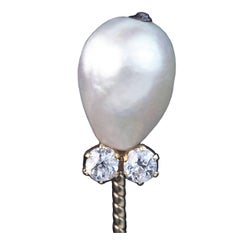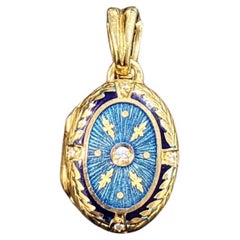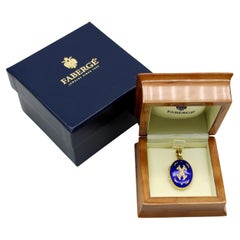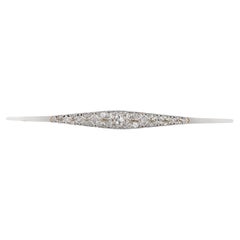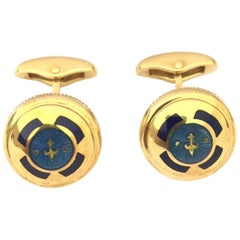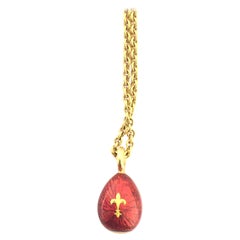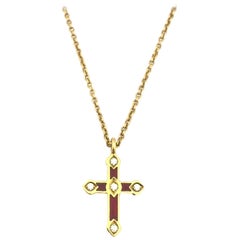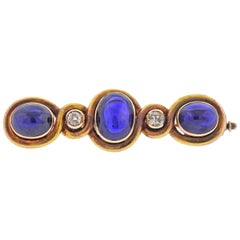Fabrege Jewlery
Antique Late 19th Century Russian Brooches
Diamond, Natural Pearl
Late 20th Century German Modern Pendant Necklaces
Diamond, Gold, 18k Gold, Yellow Gold, Enamel
1990s Unknown Modern Pendant Necklaces
Diamond, 18k Gold, Enamel
Early 20th Century Russian Brooches
Diamond, White Diamond, 18k Gold, Platinum
20th Century Russian Art Nouveau Cufflinks
White Diamond, 18k Gold, Yellow Gold, Silver, Enamel
2010s Cufflinks
2010s Pendant Necklaces
2010s Pendant Necklaces
Antique 19th Century Brooches
Diamond, Sapphire, Gold
2010s Pendant Necklaces
2010s Pendant Necklaces
2010s Chain Necklaces
2010s Charm Bracelets
2010s Chain Bracelets
2010s Cocktail Rings
2010s Necklace Enhancers
2010s Necklace Enhancers
2010s Necklace Enhancers
2010s Necklace Enhancers
Antique 19th Century Russian Brooches
Diamond, Gold, Enamel
1990s French Brooches
Diamond, Emerald, Ruby, White Gold
Antique 1890s Russian Art Deco Cufflinks
Diamond, Gold, Silver
2010s Signet Rings
2010s Cocktail Rings
Antique Late 19th Century British Belle Époque Boxes and Cases
Diamond, Enamel, Gold Plate, Silver
2010s Necklace Enhancers
Early 2000s Pendant Necklaces
Diamond, 18k Gold, White Gold, Enamel
Early 20th Century Russian Charm Bracelets
14k Gold
Early 20th Century Russian Art Nouveau Brooches
Diamond, Gold, 14k Gold, Yellow Gold, Enamel
2010s Necklace Enhancers
Antique Late 19th Century Russian Russian Empire Pendant Necklaces
Silver, Gilt Metal
Antique Late 19th Century Russian Russian Empire Pendant Necklaces
Silver, Gilt Metal
Antique Late 19th Century Russian Artist Brooches
Diamond, Pink Sapphire, 18k Gold
2010s Pendant Necklaces
Early 20th Century Russian Art Nouveau Brooches
Sapphire, Gold
Early 2000s German Modern Lever-Back Earrings
Diamond, 18k Gold
2010s Signet Rings
21st Century and Contemporary Italian Contemporary Cufflinks
White Diamond, Yellow Gold, Enamel, 18k Gold
21st Century and Contemporary Italian Contemporary Cufflinks
White Diamond, 18k Gold, Enamel, White Gold
2010s British Belle Époque Drop Earrings
Diamond, 18k Gold
Early 2000s German Contemporary Hoop Earrings
Diamond, Blue Sapphire, 18k Gold
Early 2000s German Modern Cluster Rings
Diamond, Yellow Gold, Enamel, 18k Gold
Early 20th Century Russian Pendant Necklaces
Ruby, Gold, 14k Gold, Enamel
Early 2000s German Art Nouveau Cufflinks
Diamond, Rose Gold, 18k Gold
2010s British Belle Époque Drop Earrings
Diamond, Opal, Blue Sapphire, Pink Sapphire, Yellow Sapphire, Green Sapp...
2010s Cufflinks
Ruby, 18k Gold, Rose Gold
Antique Late 19th Century Art Nouveau Brooches
Diamond, Platinum
2010s British Belle Époque Wrist Watches
Diamond, 18k Gold
Vintage 1910s Russian Belle Époque Brooches
Agate, Diamond, 14k Gold, Silver
Antique Early 1900s Russian Russian Empire Brooches
Diamond, Enamel, 14k Gold, Yellow Gold, Silver
2010s British Belle Époque Drop Earrings
Diamond, Opal, Blue Sapphire, Pink Sapphire, Yellow Sapphire, Green Sapp...
2010s British Belle Époque Stud Earrings
Diamond, Natural Pearl, Blue Sapphire, 18k Gold
2010s Pendant Necklaces
Diamond, White Gold, Enamel
2010s Pendant Necklaces
Diamond, Rose Gold, Enamel
2010s Pendant Necklaces
Rose Gold, Enamel
21st Century and Contemporary Fashion Rings
Diamond, 18k Gold, White Gold, Enamel
21st Century and Contemporary French Art Deco Pendant Necklaces
Amethyst, Diamond, 18k Gold, White Gold
21st Century and Contemporary Art Deco Pendant Necklaces
Amethyst, Diamond, Garnet, Ruby, 18k Gold, Yellow Gold
Early 2000s German Modern Pendant Necklaces
Diamond, 18k Gold, Gold, Enamel
Early 2000s German Modern Hoop Earrings
Diamond, 18k Gold
- 1
- ...
